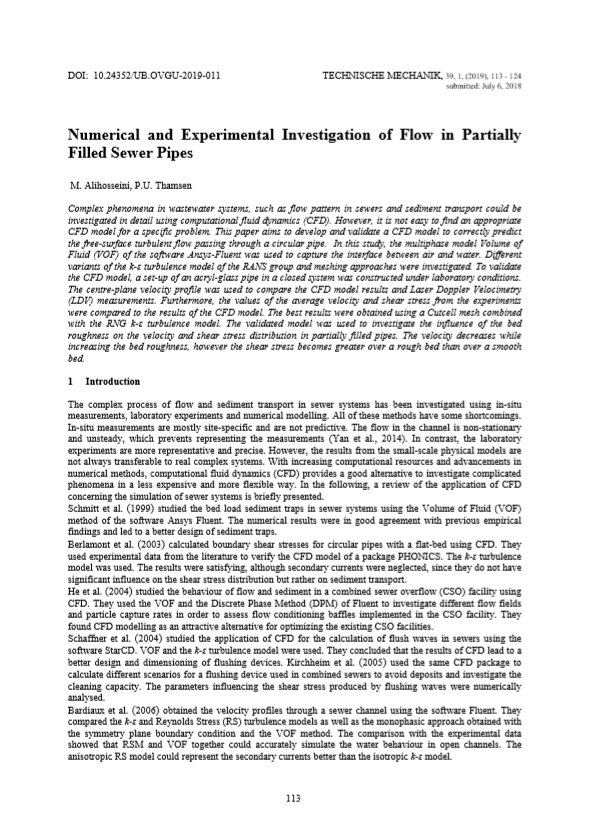Numerical and Experimental Investigation of Flow in Partially Filled Sewer Pipes
DOI:
https://doi.org/10.24352/UB.OVGU-2019-011Abstract
Complex phenomena in wastewater systems, such as flow pattern in sewers and sediment transport could be investigated in detail using computational fluid dynamics (CFD). However, it is not easy to find an appropriate CFD model for a specific problem. This paper aims to develop and validate a CFD model to correctly predict the free-surface turbulent flow passing through a circular pipe. In this study, the multiphase model Volume of Fluid (VOF) of the software Ansys-Fluent was used to capture the interface between air and water. Different variants of the k-ε turbulence model of the RANS group and meshing approaches were investigated. To validate the CFD model, a set-up of an acryl-glass pipe in a closed system was constructed under laboratory conditions. The centre-plane velocity profile was used to compare the CFD model results and Laser Doppler Velocimetry (LDV) measurements. Furthermore, the values of the average velocity and shear stress from the experiments were compared to the results of the CFD model. The best results were obtained using a Cutcell mesh combined with the RNG k-ε turbulence model. The validated model was used to investigate the influence of the bed roughness on the velocity and shear stress distribution in partially filled pipes. The velocity decreases while increasing the bed roughness, however the shear stress becomes greater over a rough bed than over a smooth bed.





